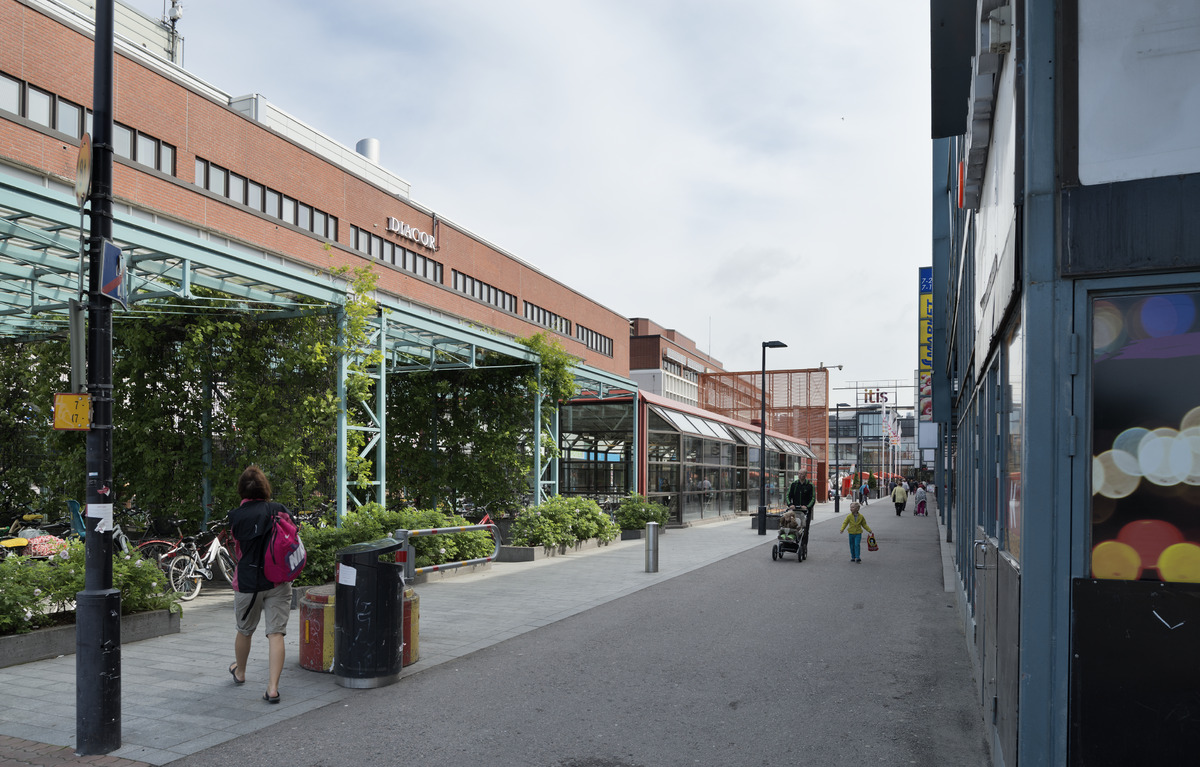Written by Gideon Oladosu
Itis and Puhos are shopping centres in Itakeskus. Itakeskus as an area is a fast growing point for businesses of both the locals and the international migrants. There are a lot of manifestations of cultural, ethnic and religious identities associated with this area.
Starting from the excursion, I visited a part of Itakeskus shopping mall (which was Itis). According to Finnish Shopping Centers (2014), Itis was formerly known as Itakeskus and it is the second largest shopping centre in Finland. In terms of location, it is situated in East Helsinki and it is close to Itakeskus metro station and Itavayla motorway. In addition, it was discovered that it has about 150 shops which are cafes, grocery stores and restaurants.
Going straight into my observations at ITIS shopping mall. The shopping mall building looks modern and this indicates good architectural design. This great architectural design also has actually shaped the activities taking place in the mall. In addition to my observation, a lot of activities (mixed activities) were observed; ranging from shopping, banking, relaxation, eating & drinking, and technological display. These activities signify great ethnic and local culture. Also, while taking stock of the uses of the shop outlets, I categorise these outlets into cloth shops, groceries markets, flower shops, restaurants & bars, communication network shops, and a bank (Nordea). The great part of my observation was that these shop outlets manifested ethnic, local and international cultures, and not only the cultures and traditions, but also the languages. These shops were named from different languages all over the world. such as English, Finnish, Japanese among many others.
While trying to see what kind of items are being sold in these shops, and trying to connect them to culture. I discovered things like clothes & clothing materials, housing materials, body ornaments (necklaces, earrings, wrist-watches), and flowers. But, to my amazement, I discovered that only one flower shop and bookshop exist in ITIS. This supports the research done by Hewidy et al (2022). However, Hewidy et al (2022), noticed that many local markets and businesses are diminishing while the foreign businesses are striving, especially through the emergence of big shopping malls. The research also noticed the growth of big shopping malls which belong to private foreign business individuals has pushed the local retail businesses from Helsinki to the countryside, and yet many of these local businesses are unable to survive. This resulted in the final vanishing of these local shops which could have exhibited the local identities and cultures. Going to Itis shopping centre as my case study area, the presence of only one flower shop showed that the local culture is disappearing and the new foreign culture is emerging.
The emergence of this foreign culture and the disappearance of the local culture still shows the presence of mixed cultures and identities. It is very worthy to see that among these shop outlets, the restaurant and bars are culturally diverse, selling different dishes and drinks that are multicultural and many people of identities identifying their own ethnic shops where they can have delicacies which they were used to. A lot of people from other backgrounds go into those shops that are not from their background to have a taste of other cultural food. Therefore, the visitors to these areas were discovered to be of mixed races. For instance, a lot of Arabs were seen shopping, eating and having fun and they were in their religious and cultural dresses. This displays how the area is culturally significant for this group of people. Also, many Finnish individuals and many other people from diverse backgrounds were found shopping in the grocery shops.
In addition to these visitors to the shopping mall, many of the workers in these shop outlets were found to come from different cultures and races. In addition to my observation, fathers and mothers were seen pushing baby strollers around for shopping. The adults too were walking with the support of their strollers. While interacting with these visitors, which comprises father, mother and the elderly, the father and mother perspective has been that Itis is a good place to hang out with friends and family to have fun and engaging discussions. Some said it is a place to connect back to their homeland through the delicacies. Also, the elderly/aged especially the Finnish aged sees it as a place to go when bored at home. In addition, I heard some of the visitors speaking their languages and some of them listening to their native songs.

ZHAO TEA SHOP (Taste of Japan)

An Art Show room with labellings in Finnish

Verso: The only surviving flower shop

The modern architectural view of ITIS

The Affordances (seats) created for the visitors

The elderly and parents driving the strollers
Finally, in my opinion, I see Itis Shopping mall in Itakeskus as a good place to develop a sense of community. Also, It possesses many affordances for all ethnic groups, and for all ages. Lastly, the presence of these two shopping centres have made Itakeskus as an example of the Cosmopolitan Melting Pot in Helsinki (Finland), and the metaphor of the salad bowl theory of multiculturalism could be seen being vividly manifested.
References
Finnish Shopping Centers (2014). Finnish council on shopping centres. https://en.wikipedia.org/wiki/Finnish_Council_of_Shopping_Centers. Retrieved 16.02.2023
Hossam Hewidy & Johanna Lilius (2022) In the blind spot: ethnic retailing in Helsinki and the spontaneous placemaking of abandoned spaces, European Planning Studies, 30:8, 1493-1513, DOI: 10.1080/09654313.2021.1932763
